The Monte San Giorgio is a cross-border UNESCO World Heritage, shared by Switzerland and Italy. The wooded mountain of Monte San Giorgio is located in the canton Ticino in Switzerland, about 50 km from Bellinzona. The pyramid-shaped mountain is overlooking Lake Lugano. The Monte San Giorgio is a place of extreme historical, archaeological and scientific value. The rocks of the Monte San Giorgio contain a rich quantity of fossils from the Triassic, a geologic period that took place 250-230 million years ago. During the Triassic Period, the Monte San Giorgio was a subtropical lagoon, the lagoon was partially separated from the open sea by an offshore reef, the seabed of the lagoon created an environment favorable to the preservation of the remains of the animals that inhabited the lagoon. Because the lagoon was near land, the fossils include not only marine fossils, but also fossils from the nearby land such as insects, reptiles and plants. The Fossil Museum in Meride exhibits a selection of the fossilised animals and plants from the Monte San Giorgio. There is also a fossil museum in Besano, an Italian town about 12 km from the town of Varese. The Monte San Giorgio was declared a UNESCO World Heritage in 2003. An extension of the site: A section of the mountains Poncione of Arzo (also Monte Pravello) and the Monte Orsa in Italy were added to the site in 2010. The Monte San Giorgio is a natural World Heritage Site. Another outstanding fossil deposit in Europe is the Messel Pit in Germany.
www.werelderfgoedfotos.nl © Copyright World Heritage Photos
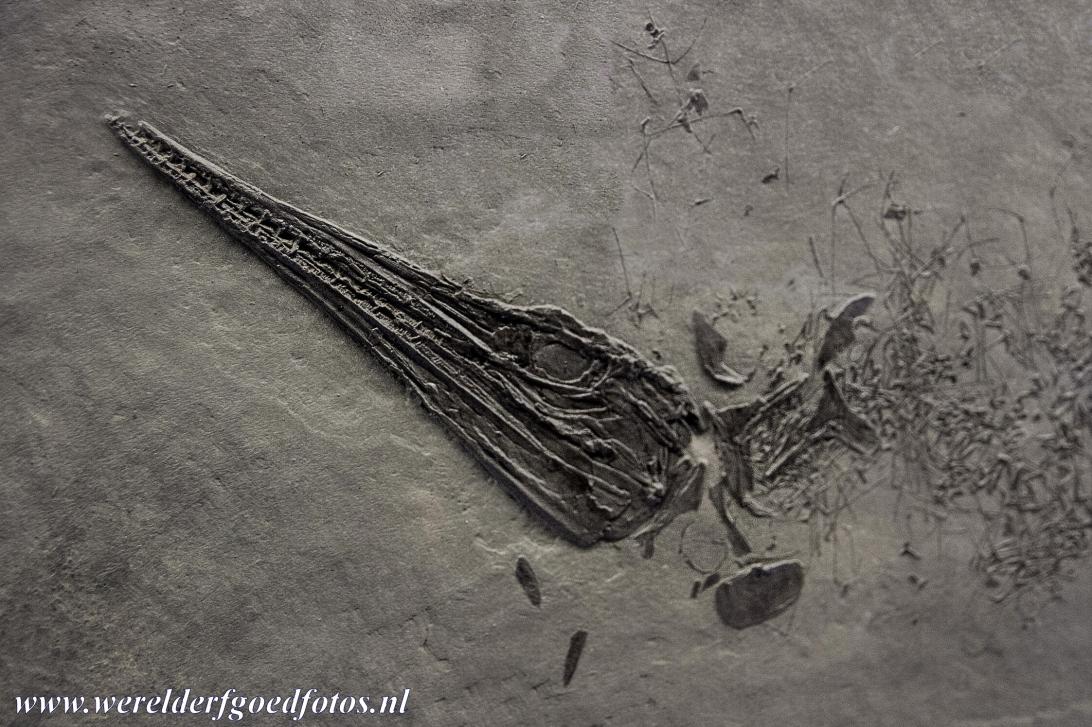
Monte San Giorgio: The rocks of the Monte San Giorgio contain a great number of fossils. The fossils of the Monte San Giorgio have been dated to an age of 243 to 239 million years, when the Monte San Giorgio was a subtropical lagoon. The fossils found at the Monte San Giorgio are mainly marine animals, such as fishes and marine reptiles, only a few fossils of insects, plants and terrestrial reptiles were found.

Monte San Giorgio: The rocks of the Monte San Giorgio contain a great number of fossils. The fossils of the Monte San Giorgio have been dated to an age of 243 to 239 million years, when the Monte San Giorgio was a subtropical lagoon. The fossils found at the Monte San Giorgio are mainly marine animals, such as fishes and marine reptiles, only a few fossils of insects, plants and terrestrial reptiles were found.
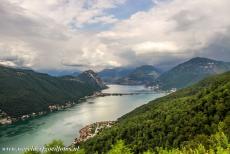
Monte San Giorgio: A view of Lake Lugano from the 1097 metres high Monte San Giorgio. The wooded Monte San Giorgio is a mountain of extreme archaeological, historical and scientific value. The Monte San Giorgio is situated on border between southern Switzerland and northern Italy. The rocks of the Monte San Giorgio contain a great number of fossils that date as far back as 243 to 239 million years ago.
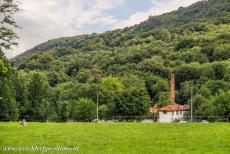
Monte San Giorgio: A small factory in Meride for the extraction of mineral oil from oil shale. The factory is situated at the foot of the Monte San Giorgio. The first fossils at the Monte San Giorgio were discovered during mining excavations of the oil shale in the mid 1800s. The numerous and exceptionally well preserved fossils of the Monte San Giorgio have been excavated by Swiss and Italian palaeontologists since 1850.
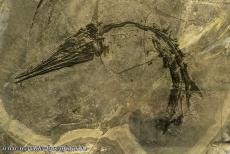
Monte San Giorgio: A fossil of the Saurichthys curionii was a fish of about one metre long and looked similar to the modern pike. The fossil was found in Meride at the foot of the Monte San Giorgio. The Saurichthys fossil is on display at the Fossil Museum in Meride in Switzerland. The Monte San Giorgio in Switzerland and the neighbouring mountains Poncione of Arzo, Monte Pravello and Monte Orsa in Italy are among the most important fossil deposits in the world.
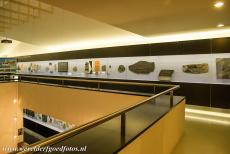
Monte San Giorgio: Inside the Fossil Museum in the small picturesque Swiss village of Meride. The Swiss Fossil Museum at Meride and the Besano Fossil Museum in Italy displays the fossils found at the Monte San Giorgio. On three floors the fossil museum in Meride presents a great number of well preserved fossils of the Monte San Giorgio, a UNESCO World Heritage Site. The mountain is situated in the Swiss canton of Ticino and the Italian province of Varese.
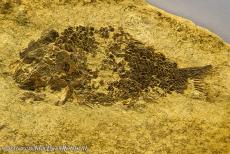
Monte San Giorgio: The fossil of a Bobasatrania is on display at the Fossil Museum in Meride. This fossil was found in 1958 during excavations at the Mirigioli site on the Monte San Giorgio. Bobasatrania is an extinct genus of prehistoric bony fish. The rocks of the Monte San Giorgio contain a rich quantity of fossils from the Triassic Period (250-230 million years ago). Millions of years ago, the Monte San Giorgio was the bottom of a subtropical lagoon.
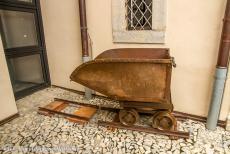
Monte San Giorgio: The Fossil Museum in Meride houses a mining cart. The mining cart was used to transport the oil shale from the Monte San Giorgio to a small factory in Meride. The oil shale was mined in order to extract mineral oil. The layers of the shale of the Monte San Giorgio were also rich in fossils. The Fossil Museum in Meride is part of the UNESCO World Heritage Site Monte San Giorgio.
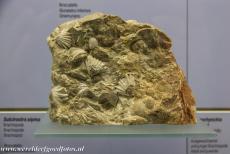
Monte San Giorgio: The Sulcirostra alpina is on display at the Fossil Museum in Meride. The Monte San Giorgio was not the mountain that we know today, but the bottom of a subtropical lagoon, partially separated from the open sea by an offshore reef, sandbanks and several small islands. The Monte San Giorgio was created during the formation of the Swiss Alps, millions of years ago, through the collision between the continents of Africa and Europe.
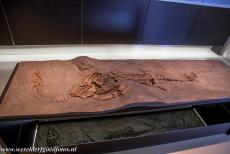
The Monte San Giorgio rose about 230 million years ago, the African continent began to move northwards compressing the Eurasian continent. This powerfull collision caused a series of deformations. Also in the area around the Monte San Giorgio. An ancient seabed was pushed upwards emerging from the water, and the Alps, the Monte San Giorgio and the surrounding mountains were formed, a process of millions years.
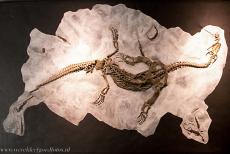
Monte San Giorgio: The marine fossil found at the Monte San Giorgio, on display in the Fossil Museum in Meride in Switzerland. Although the fossils found on Monte San Giorgio are mostly of marine animals, fossils with the remains of terrestrial plants, plants that grew on land, were also discovered, this indicates the presence of nearby islands or mainland.
